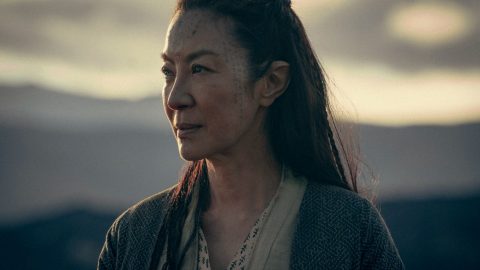
When I was 12, back in existentially-too-long-ago 2009, I changed schools. A fairly normal state of affairs, as children do tend to do so at various points in their lives. I was going from quite a large school with around 1000 students that I hated, to a school with around 100 pupils total. It was probably technically speaking worse as a place of learning, but it did have something the bigger school didn’t: a photography class.
When I first turned up at the school, and learned I could study photography my immediate thought was “that’s a thing you can do?” Clearly my adolescent brain couldn’t see any subjects as a possibility outside of Maths, Science, English, and the open ended Art. Bear in mind, Instagram didn’t launch until the following year, in 2010, and the iPhone was only a couple of years old, so photography was mostly relegated to disposable cameras, or SLRs for the specialists.
Now, over a decade on, being able to take a good picture is easier than ever, with some smartphones even having multiple lenses. But digital photography isn’t just for phones; there are a whole host of games dedicated to the medium. And it seems that 2021 is the year of photography games.

In April we saw the release of the long sought after sequel to 90’s classic Pokémon Snap, the catchily named New Pokémon Snap. In June, the switch port of indie darling Umurangi Genration came out, and September brought us the graphic-novel-like TOEM. Each game approaches photography in a completely unique way, and in turn say something different about the joys, and sometimes necessities, of photography.
Fans of the original Pokémon Snap had been desperate for a sequel for years, and I don’t think it’s just because of the evergreen popularity of Pokémon as a franchise. The original game was so interesting because it let you interact with the titular pocket monsters in a way the mainline games didn’t. Later titles, like X and Y did eventually let you do things like petting your Pokémon, or feeding them treats, but Snap’s approach to the creatures added a layer of realism to them that pixel art can’t always do.
Seeing them in their natural habitats, being able to take a cute or funny picture of them, was hugely endearing at the time, and still is now. It’s not so different from the pet photography culture we see online now. We have whole accounts dedicated just to people’s pets, because unsurprisingly, we love a good cat picture. The original Snap was almost prescient in that way, and I think that’s why a sequel was so sought after. Photography has become incredibly accessible, and has become a meaningful way with which we engage in the world.
There’s a huge joy that comes from walking around a place mindlessly, taking pictures of whatever it is you fancy. TOEM understands that sentiment the most out of all the games mentioned; the only option you have is the zoom function on the camera, so it keeps things simple. And that simplicity is what makes TOEM shine. You can take a picture of a man being swarmed by seagulls, or just a simple selfie. It doesn’t matter what you take a picture of: it just wants you to take a picture.
From the countless posts on Instagram, it’s clear that most people like to take that approach. A majority of photography you’ll find on the app won’t be perfect. Something might not be centered, maybe a little out of focus, the colours might clash: but who cares? The more people that are out there taking pictures of things that make them happy, the better, and that’s often what’s at the heart of TOEM too. There’s clearly a huge amount of joy that people get out of using the app, and as long as no material harm is done to anyone, where’s the harm in posting what you like?
In contrast, Umurangi Generation takes a much more serious tone. The game is set in Tauranga, Aotearoa, sometime in the near future, during a crisis the nature of which is revealed over the course of the game. You are a Māori courier, and you’re tasked with documenting numerous objects or places across the numerous levels. It’s a documentary style take on the niche genre of photography games, and one that clearly connected with a number of people.

The idea for the game was born from developer Tali Faulkner teaching his younger cousin how to use a camera, and thinking ‘what if I made a game that did that?’ In turn, Umurangi Generation almost acts as a beginner course into photography. You’ll acquire different lenses and effects you can alter your photos with, and you’ll even learn about things like aperture and ISO, something that is more for specialists than hobbyists.
Above all else though, it is weaponising the player with the ability to take good pictures. Often art can be something which resists oppressive regimes, and photography is no different. The game places you in a world full of political strife, and asks you to document it all so that people can see the truth of the world. Thanks to smartphones and social media, we’re able to see so much more about how the world works – we likely wouldn’t be aware of specific instances of police brutality against the likes of George Floyd, and we wouldn’t be able to see the atrocities occurring in Palestine earlier this year in as great as detail as we have.
Photography games seem to resonate with people, and I think it’s because the younger generation (or even the Umurangi Generation, if you will) understand how to view the world through that lens (please pardon the pun). Taking a picture in a game can feel like a tactile thing, because we so easily have the ability to do so ourselves. Being able to hold a camera in a digital space and take a picture of something we never could in real life feels special, and easily relatable, and in a time where more of us are working home, doing something familiar in a digital space is a comforting experience. And with games like Pupperazzi and Shashingo on the horizon, and a port of FATAL FRAME: Maiden of Blackwater out next month, I don’t think the trend of photography games is stopping anytime soon.
Fatal Frame: Maiden of Black Water is out next month, and Pupperazi and Shashingo are out later this year. All the other games mentioned in this article are out now and you can take photographs in them right away.
The post Why 2021 is the year of the photography game appeared first on NME.







